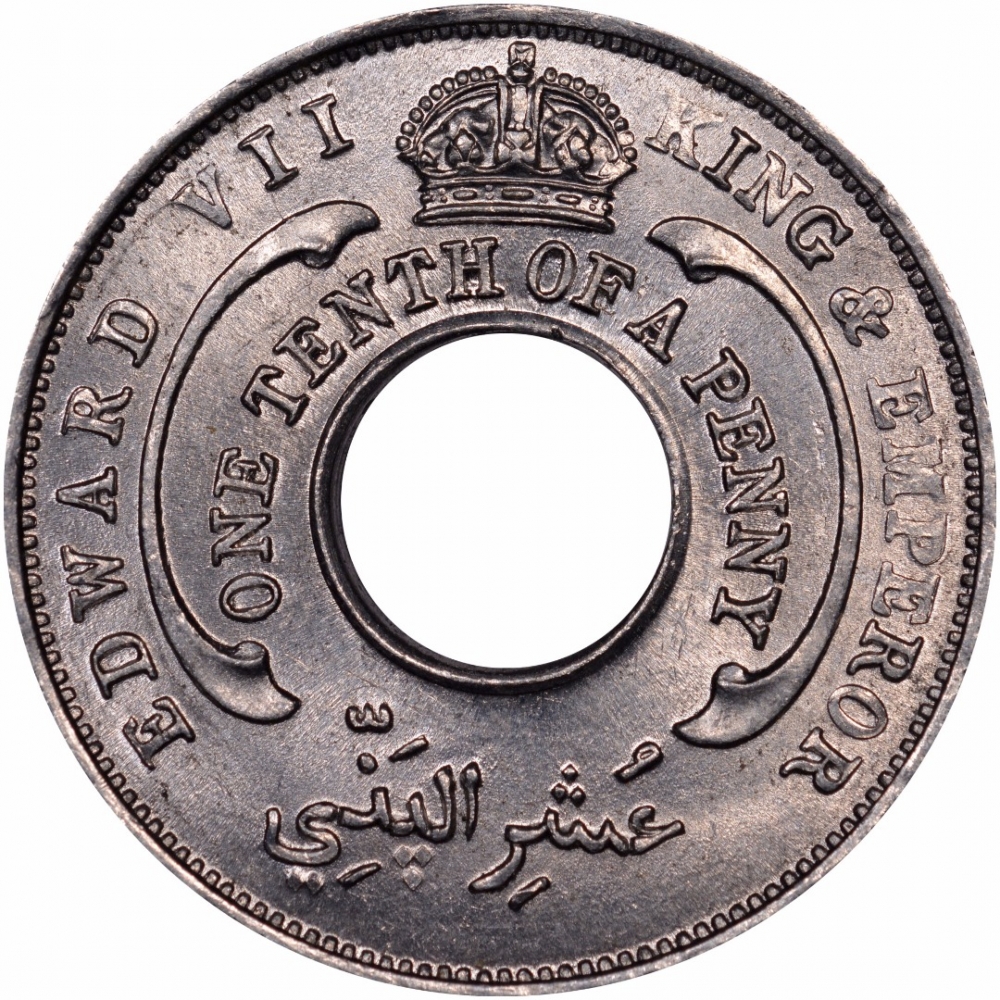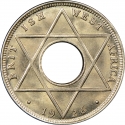You are about to finish your registration. Please check your mailbox (including spam folder). There should be a letter with a confirmation link. Check setting to make sure that your e-mail address is correct.
Send letter againDescription
British West Africa was the collective name for British colonies in West Africa during the colonial period, either in the general geographical sense or more specifically those comprised in a formal colonial administrative entity. The United Kingdom held varying parts of these territories or the whole throughout the 19th century. From west to east, the colonies became the independent countries of the Gambia, Sierra Leone, Ghana, and Nigeria.
This coin was probably the first aluminium coin in the world to go into circulation. The British Mint commenced mintage of these coins in 1906, and in 1907 also produced aluminium one cent coins for British East Africa. The aluminium coins suffered from corrosion, and were soon replaced with copper-nickel coins of the same designs.
A Government official in 1912 stating that 'the ordinary native lives on 1 1/4 d. a day'. This is the reason for the production of such a low denomination coin as the tenth of a penny.
Obverse

|
An imperial crown above a central circular hole with a scroll ornament to right and left; below crown and around the hole, the denomination in English; around, outside the scroll ornaments, the legend; below the hole, the denomination in Arabic. EDWARD VII KING & EMPEROR |
|---|---|
Reverse

|
Around circular central hole, Solomon's seal (six-pointed "Star of David"); around above country name; below, the star divides the date. NIGERIA BRITISH WEST AFRICA |
| Edge |
1/10 Penny
Nigeria
KM# 1
Characteristics
| Material | Aluminium |
| Weight | 1 g |
| Diameter | 20.3 mm |
| Thickness | 1.72 mm |
| Shape |
|
| Alignment | Medal |
| Mint |
Royal Mint
|



